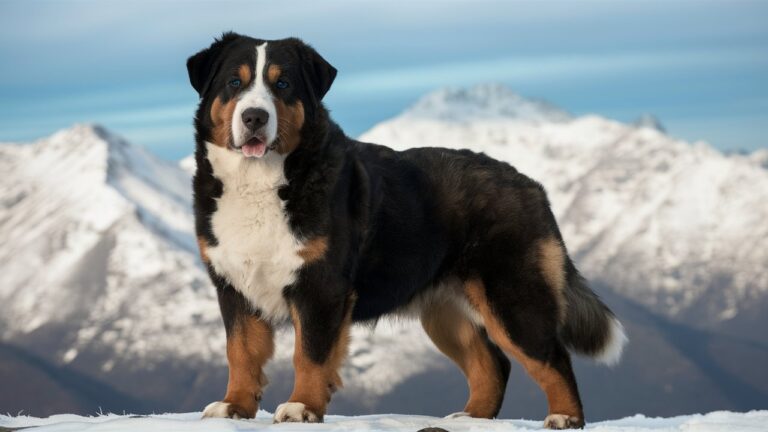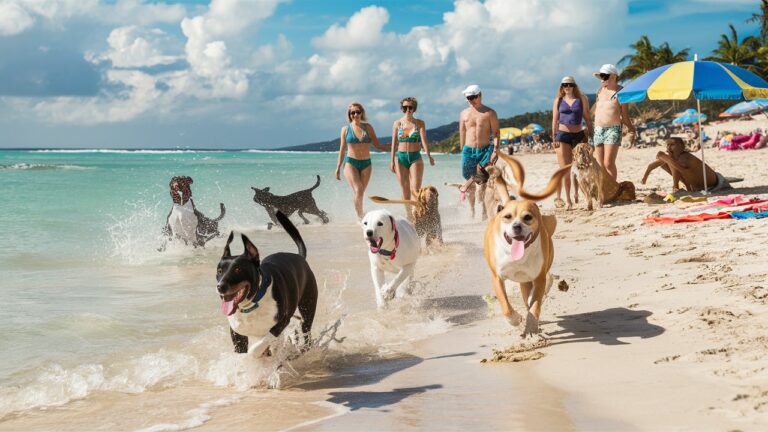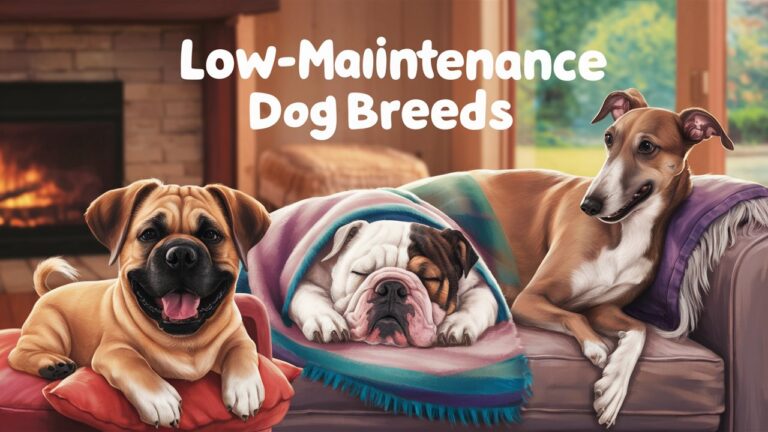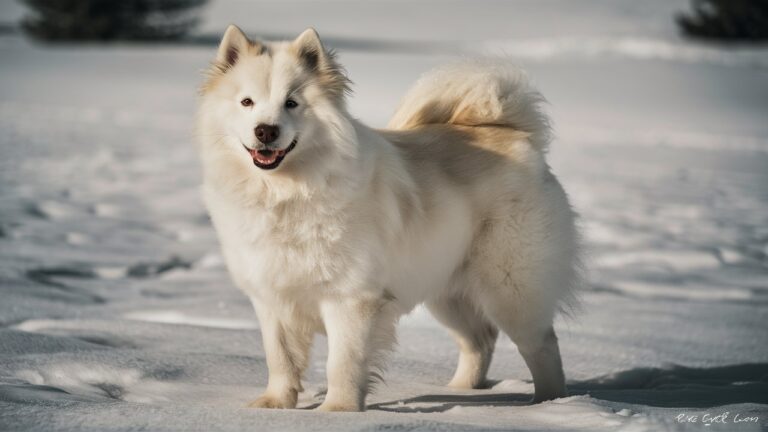Kooikerhondje: 100% Comprehensive Guide to the Dutch Decoy Dog
The Kooikerhondje, a charming and spirited breed hailing from the Netherlands, has captivated dog enthusiasts worldwide. Known for its cheerful disposition and distinctive appearance, this small sporting dog was historically used for duck hunting. In this article, we will delve into the history, characteristics, care, training, and unique aspects of the Kooikerhondje, offering a well-rounded understanding of this fascinating breed.
Table of Contents
ToggleHistory and Origin
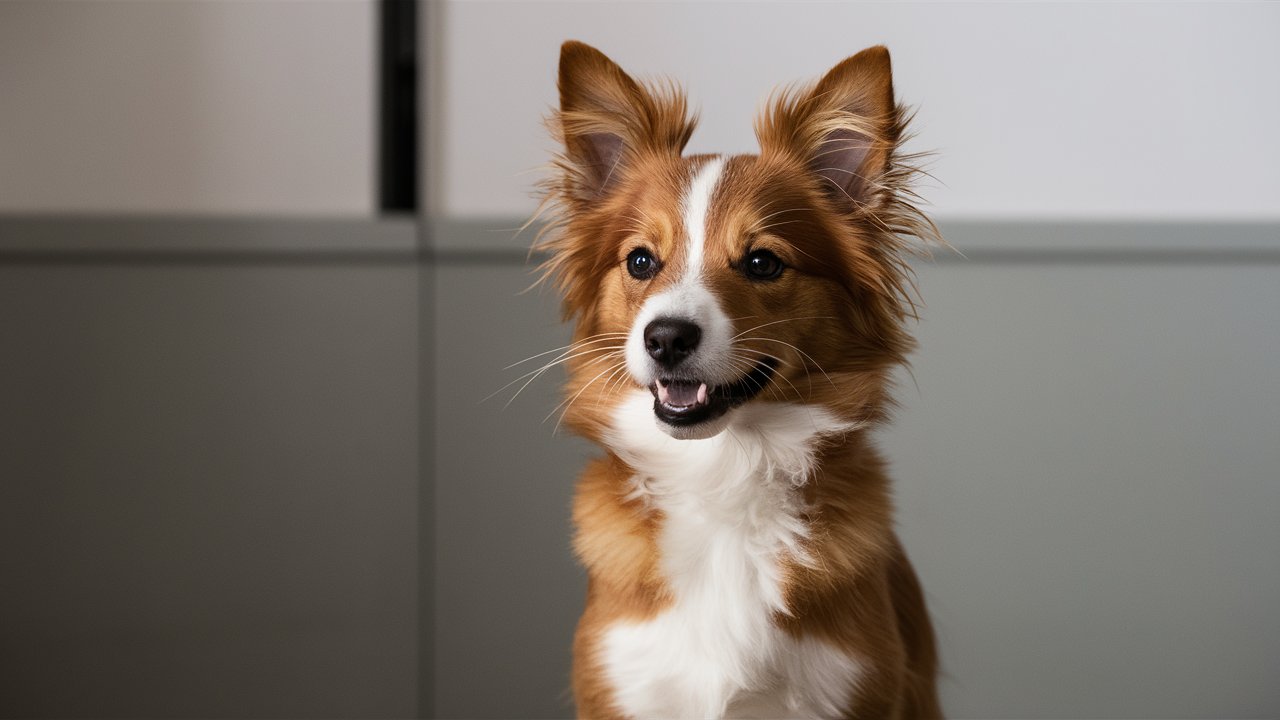
The Kooikerhondje, often simply called the Kooiker, has a storied past that dates back to the 16th century. These dogs were primarily used in the Netherlands for a specialized form of duck hunting known as “eendenkooi” or duck decoying. Hunters, called “kooikers,” utilized these agile and intelligent dogs to lure ducks into traps for capture.
Personal Anecdote: I first encountered a Kooikerhondje while visiting a small village in the Netherlands. The owner, an elderly gentleman, shared stories of how his grandfather used their Kooikerhondje to help with duck hunting. It was fascinating to see the dog’s keen instincts and agility, traits that have been passed down through generations.
Physical Characteristics
The Kooikerhondje is a small to medium-sized dog, typically weighing between 20-24 pounds and standing about 14-16 inches tall at the shoulder. They have a distinct appearance with a white coat adorned with patches of orange-red. Their expressive dark eyes and feathered ears, often tipped with black, give them a unique and endearing look.
Coat and Grooming: The Kooikerhondje’s coat is medium-length and slightly wavy, requiring regular brushing to maintain its condition. Despite their hunting background, they do not have an overly high grooming demand, but their feathered ears and tail need occasional attention to prevent matting.
Temperament and Personality
Kooikerhondjes are known for their friendly and affectionate nature. They are intelligent, alert, and have a strong desire to please their owners, making them highly trainable. However, they can be reserved around strangers and need proper socialization from an early age.
Personal Experience: My friend’s Kooikerhondje, named Toby, is a perfect example of the breed’s affectionate nature. Whenever I visit, Toby greets me with an excited wag of his feathered tail and insists on sitting beside me, leaning in for pets and attention. His loyalty and bond with his family are evident in every interaction.
Training and Exercise
Due to their working background, Kooikerhondjes are active dogs that thrive on physical and mental stimulation. Regular exercise is crucial to prevent boredom and destructive behavior. They excel in various dog sports, including agility, obedience, and flyball.
Training Tips:
- Positive Reinforcement: Use treats, praise, and play to reward good behavior. Kooikerhondjes respond well to positive reinforcement methods.
- Consistency: Be consistent with commands and rules. These intelligent dogs can quickly learn what is expected of them.
- Socialization: Expose your Kooikerhondje to different people, places, and situations from a young age to ensure they grow up to be well-rounded adults.
Exercise Needs: Aim for at least an hour of exercise daily. This can include walks, playtime in the yard, or participation in dog sports. Mental stimulation, such as puzzle toys or training sessions, is equally important.
Health and Lifespan
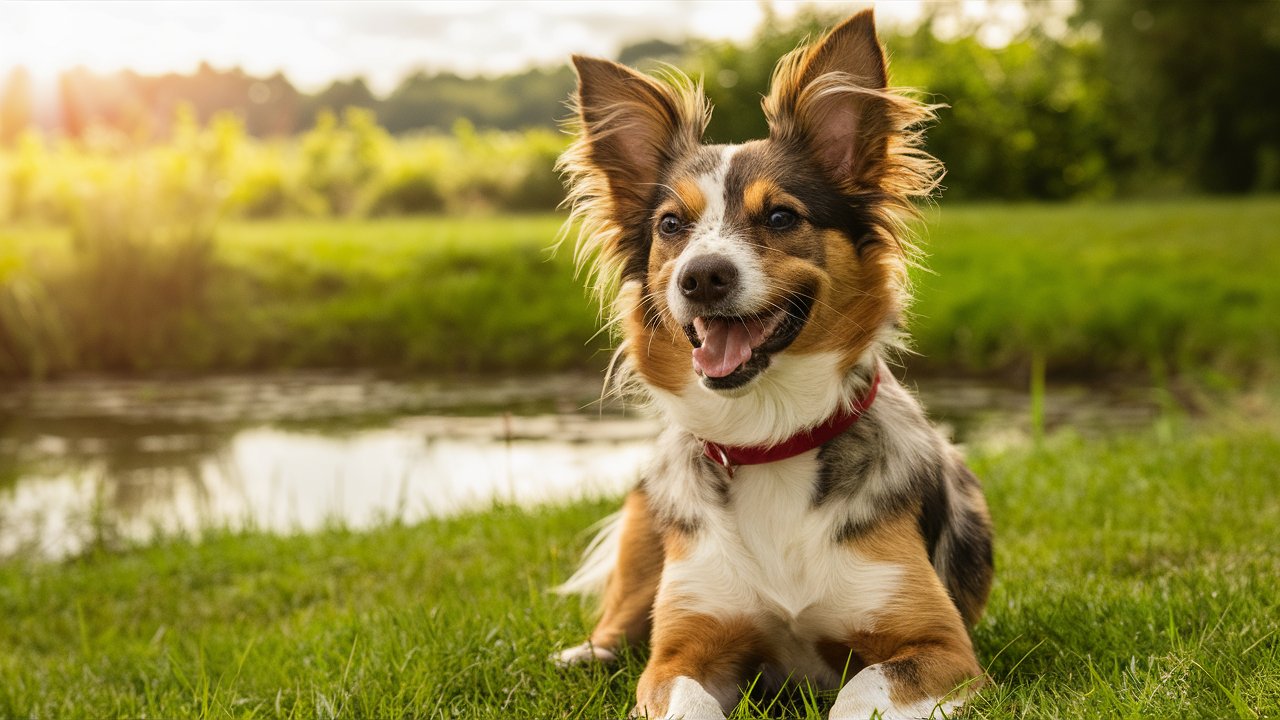
Kooikerhondjes are generally healthy dogs, but like all breeds, they can be prone to certain genetic conditions. Responsible breeders screen for health issues such as:
- Patellar Luxation
- Epilepsy
- Hereditary Necrotizing Myelopathy (ENM)
With proper care, Kooikerhondjes typically live between 12 to 15 years. Regular veterinary check-ups, a balanced diet, and maintaining a healthy weight are essential for their well-being.
Personal Story: A Kooikerhondje named Bella, owned by a close family friend, lived to the ripe old age of 16. Bella remained active and playful well into her senior years, a testament to the breed’s robust health and vitality. Her owner attributed her long life to regular vet visits, a nutritious diet, and plenty of love and exercise.
Living with a Kooikerhondje
Living with a Kooikerhondje can be a rewarding experience, provided you understand their needs and characteristics. These dogs form strong bonds with their families and prefer to be involved in daily activities. They are well-suited for families with active lifestyles and can adapt to various living situations, from apartments to houses with large yards.
Adaptability: While they are adaptable, Kooikerhondjes do best in environments where they receive ample attention and exercise. They can be left alone for short periods, but prolonged isolation can lead to separation anxiety and behavioral issues.
Children and Other Pets: Kooikerhondjes are generally good with children, especially if raised with them. They can also get along with other pets, including cats, if properly introduced and socialized.
Breeding and Preservation
Breeding Kooikerhondjes requires a commitment to maintaining the breed’s health, temperament, and working abilities. Responsible breeders focus on genetic diversity and screen for hereditary conditions to ensure the long-term health of the breed.
Preservation Efforts: In the mid-20th century, the Kooikerhondje faced near extinction. Thanks to dedicated breeders and enthusiasts, the breed was revived and is now recognized by various kennel clubs worldwide. Preservation efforts continue to focus on maintaining the breed’s unique characteristics and historical significance.
The Kooikerhondje in Modern Times
Rise in Popularity
In recent years, the Kooikerhondje has gained recognition beyond the Netherlands, captivating dog lovers across the globe. The breed’s charming appearance, coupled with its versatile abilities, has contributed to its rising popularity. Organizations like the American Kennel Club (AKC) and the United Kennel Club (UKC) have recognized the Kooikerhondje, further boosting its presence in dog shows and competitions.
Dog Shows and Competitions: Kooikerhondjes excel in conformation shows, where judges assess their adherence to breed standards. Their agility, intelligence, and eagerness to please also make them strong contenders in various dog sports. From agility courses to obedience trials, these dogs demonstrate their prowess and versatility.
Roles Beyond Hunting
While the Kooikerhondje’s historical role was duck hunting, modern Kooikerhondjes have found new roles that capitalize on their unique skills and temperament. Their friendly and intuitive nature makes them excellent candidates for therapy and assistance work.
Therapy Dogs: Kooikerhondjes are increasingly used as therapy dogs, providing emotional support and companionship to individuals in hospitals, nursing homes, and schools. Their gentle disposition and ability to connect with people on an emotional level make them ideal for this role. Therapy dogs like Max, mentioned earlier, bring comfort and joy to those in need, showcasing the breed’s adaptability and compassion.
Service Dogs: Some Kooikerhondjes are trained as service dogs, assisting individuals with disabilities. Their intelligence and trainability allow them to perform tasks such as retrieving items, providing balance support, and alerting to medical conditions. These dogs enhance the quality of life for their handlers, demonstrating the breed’s capability and versatility.
The Kooikerhondje Community
As the Kooikerhondje‘s popularity grows, so does the community of enthusiasts and owners. Online forums, social media groups, and breed clubs provide platforms for sharing information, experiences, and advice. These communities foster a sense of camaraderie among Kooikerhondje owners and play a crucial role in promoting responsible breeding and ownership.
Breed Clubs: Organizations like the Kooikerhondje Club of the USA (KCUSA) and the Vereniging Het Nederlandse Kooikerhondje in the Netherlands are dedicated to preserving the breed’s heritage and promoting its welfare. They offer resources on training, health, and breeding, and organize events that bring Kooikerhondje enthusiasts together.
Online Presence: Social media platforms like Facebook, Instagram, and YouTube are filled with Kooikerhondje content. Owners share photos, videos, and stories of their dogs, creating a virtual community that celebrates the breed. This online presence helps spread awareness and appreciation for the Kooikerhondje, attracting potential owners and enthusiasts.
Challenges and Considerations
Despite their many strengths, Kooikerhondjes are not without challenges. Potential owners should be aware of certain considerations to ensure a harmonious relationship with their Kooikerhondje.
Exercise and Stimulation: Kooikerhondjes require regular physical and mental stimulation. Without sufficient exercise and engagement, they can become bored and develop behavioral issues. Prospective owners should be prepared to invest time in activities that challenge their dog’s mind and body.
Socialization Needs: Early and consistent socialization is crucial for Kooikerhondjes. Their natural wariness of strangers can be mitigated through positive exposure to various people, animals, and environments. This helps them grow into well-adjusted adults and prevents anxiety or fear-based behaviors.
Health Screenings: Responsible breeding practices are essential to minimize the risk of hereditary conditions. Prospective owners should seek breeders who conduct health screenings and provide documentation of the puppy’s lineage. Ensuring that your Kooikerhondje comes from a reputable breeder helps promote the long-term health and well-being of the breed.
Kooikerhondje in Popular Culture
The Kooikerhondje‘s unique charm has not gone unnoticed in popular culture. They have appeared in various media, from books and television shows to online content. Their distinct look and engaging personality make them memorable characters that resonate with audiences.
Books and Literature: The Kooikerhondje has been featured in children’s books and novels, often portrayed as a loyal and intelligent companion. These representations help introduce the breed to a wider audience and highlight its positive traits.
Television and Movies: While not as commonly seen in mainstream media as some other breeds, Kooikerhondjes have made appearances in European television shows and films. Their roles often reflect their real-life attributes, such as agility, intelligence, and a strong bond with their owners.
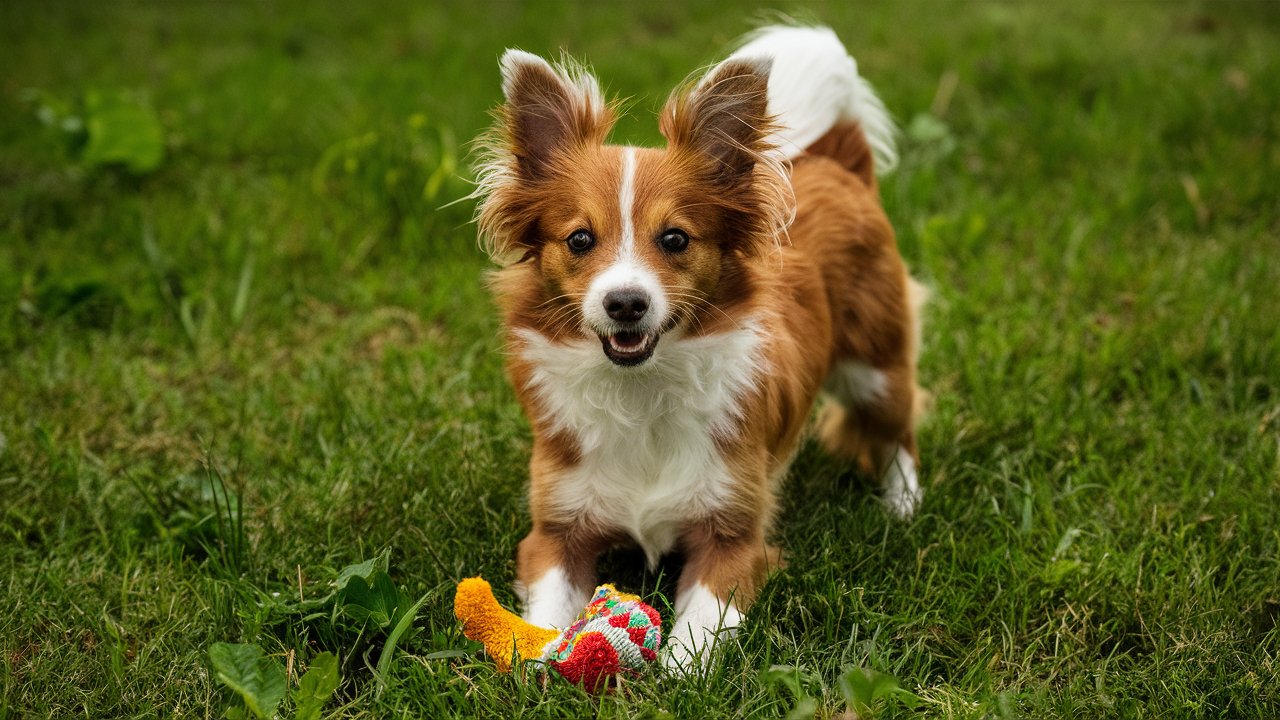
Conclusion
The Kooikerhondje is a breed that combines historical significance, unique characteristics, and a loving nature. Their versatility as hunting dogs, companions, and therapy animals showcases their adaptability and intelligence. Whether you are drawn to their charming appearance, spirited personality, or rich history, the Kooikerhondje is a breed that offers endless rewards for those who choose to share their lives with them.
Final Thoughts: As you consider bringing a Kooikerhondje into your home, remember that they thrive on companionship, exercise, and mental stimulation. Their loyal and affectionate nature makes them wonderful family pets, and their intelligence and agility offer endless opportunities for fun and bonding. With proper care, training, and love, a Kooikerhondje can be a delightful addition to any household.
